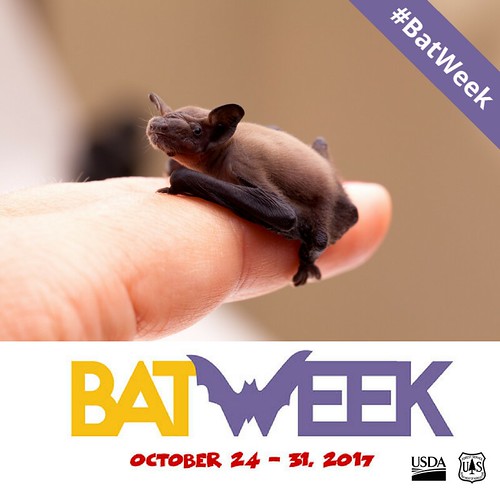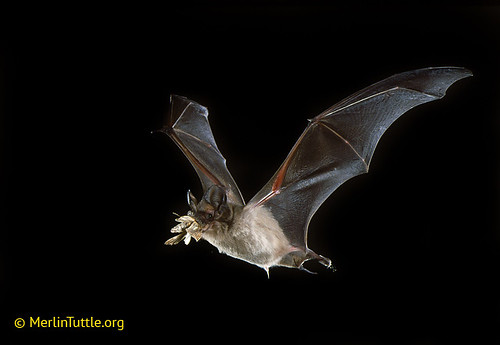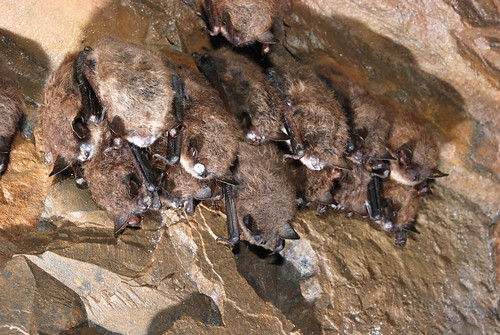
By the time October comes around, store shelves are stocked with Halloween candy, costumes, and decorations. Bats are often situated among this imagery, whether as silhouettes in the background or as blood-sucking monsters.
But bats are none of these things. They are primarily nocturnal, they make their homes in dark places, but there’s nothing scary about them.
That is why Bat Week, October 24-31, is a time to celebrate bats, what they contribute to our society, and to dispel the myths that cause so much misunderstanding of these gentle, intelligent creatures.
There are more than 1,300 species of bats worldwide, and they are diverse. Some, like Kitti’s hog-nosed bat, also known as the bumble bee bat, can be as small as your thumbnail and survives on insects. Others like the flying fox eat fruit and have earned their name due to their impressive size.

There are three species of vampire bat among those 1,300. However, they live in Mexico, Central and South America; feed primarily on large livestock; and take about an ounce of blood in a feeding. Forty-seven species of bat call the United States home.
Bats provide valuable services to us. Most feed on insects and play an important role in pest control on agricultural crops. The various species of beetles, moths, and other insects that often plague crops represent a tasty meal to a hungry bat. In fact, it is estimated that if bats were lost in North America, savings of up to $3.7 billion dollars annually would be lost due to increased pesticide requirements in agriculture. In one case, a Georgia pecan farmer was able to abandon pesticide use altogether after he built bat houses housing several thousand Mexican free-tailed bats.
The Forest Service is looking into the role that bats play in pest insect control on the forest as well. Many insects, like bark beetles and gypsy moths, can be devastating to forests, and as voracious insect eaters, bats have the potential to help cull their numbers.
Recognizing the role they play, the Forest Service has long been a champion of bat conservation. Over the last decade, the fungal disease white-nose syndrome has killed more than six million bats. While Forest Service researchers seek a solution to white-nose syndrome, the agency’s land managers explore improved ways to manage bat habitat.
Within the 193 million acres of forests and grasslands that the agency manages, there are more than 25,000 abandoned mines that present both opportunity and hazard. Recognizing the potential of abandoned mines as ideal roosting, hibernation, or maternity sites, the Forest Service has constructed “bat gates” that provide a grating to keep visitors from stumbling into a potential hazard while allowing bats to fly freely.
You too can make a big difference by planting bat-friendly gardens, building bat houses, and helping dispel myths about bats.


